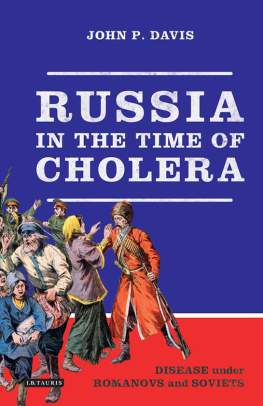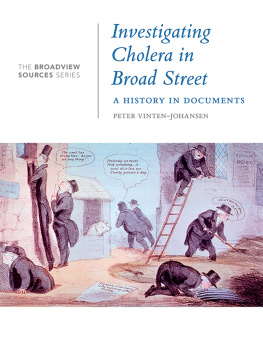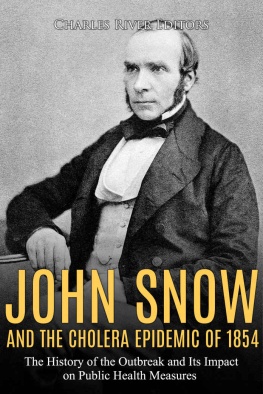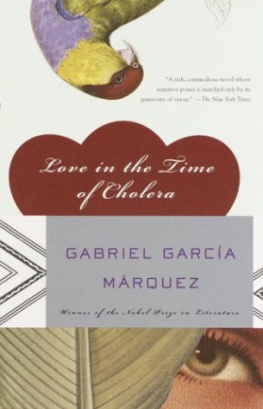CHOLERA
CHOLERA
The Biography

Christopher Hamlin

OXFORD
UNIVERSITY PRESS
Great Clarendon Street, Oxford OX2 6DP
Oxford University Press is a department of the University of Oxford. It furthers the Universitys objective of excellence in research, scholarship, and education by publishing worldwide in Oxford New York
Auckland Cape Town Dar es Salaam Hong Kong Karachi Kuala Lumpur Madrid Melbourne Mexico City Nairobi New Delhi Shanghai Taipei Toronto With offices in
Argentina Austria Brazil Chile Czech Republic France Greece Guatemala Hungary Italy Japan Poland Portugal Singapore South Korea Switzerland Thailand Turkey Ukraine Vietnam
Oxford is a registered trade mark of Oxford University Press in the UK and in certain other countries
Published in the United States by Oxford University Press Inc., New York
Christopher Hamlin 2009
The moral rights of the author have been asserted Database right Oxford University Press (maker)
First published 2009
All rights reserved. No part of this publication may be reproduced, stored in a retrieval system, or transmitted, in any form or by any means, without the prior permission in writing of Oxford University Press, or as expressly permitted by law, or under terms agreed with the appropriate reprographics rights organization. Enquiries concerning reproduction outside the scope of the above should be sent to the Rights Department, Oxford University Press, at the address above
You must not circulate this book in any other binding or cover and you must impose the same condition on any acquirer
British Library Cataloguing in Publication Data Data available
Library of Congress Cataloging-in-Publication Data
Hamlin, Christopher, 1951
Cholera : the biography / Christopher Hamlin.
p. ; cm.(Biographies of disease)
Includes bibliographical references and index.
ISBN 978-0-19-954624-4 (hardback : alk. paper)
1. CholeraHistory19th century. 2. CholeraHistory20th century.
I. Title. II. Series: Biographies of disease (Oxford, England)
[DNLM: 1. Cholerahistory. 2. History, 19th Century.
3. History, 20th Century. WC 262 H223c 2009]
RA644.C3H28 2009
614.514dc22 2009026414
Typeset by SPI Publisher Services, Pondicherry, India
Printed in Great Britain
on acid-free paper by Clays Ltd, St Ives plc
ISBN 9780199546244
1 3 5 7 9 10 8 6 4 2
ACKNOWLEDGEMENTS
The author thanks Jessica Weaver and Angharad, Fern, and Kat Hamlin for research and editing help, and Bill and Helen Bynum for their judicious mix of encouragement and critique.
I would like to express my great debt and thanks to the many historians and other cholera scholars whose studies I have drawn on. In a more academic work these pages would be thick with specific references to their works. Citation conventions of this series minimize use of notes in favor of a Further Reading section where those works are cited and situated. But if the specific references are rare, the debt is no less deep; a great joy of this project has been the privilege of engaging with the rich and insightful scholarship on cholera.
CONTENTS
LIST OF ILLUSTRATIONS
PROLOGUE: HOME ALONE
I am Mary Lennox, the little girl said, drawing herself up stiffly... I fell asleep when everyone had the cholera and I have only just wakened up. Why does nobody come? No one comes because most are dead. Nine-year old Marys query in some unnamed south Asian cantonment in 1906 opens Frances Hodgson Burnetts The Secret Garden (1911). The spoiled child is vexed that her personal servant has not comeher Ayah has not only taken the cholera but had the audacity to die of it. So, too, have her mother and father. The servants had died or fled; the people were dying like flies. Cholera produced panic; noise and hurrying about and wailing frighten Mary. Social order breaks down: when people had the cholera it seemed that they remembered nothing but themselves. But cholera would also lead (as it does for Mary at Mistlethwaite Manor in North Yorkshire) to soul searching and sometimes to remarkable altruism.
Most of us need not fear cholera zapping our parents overnight. Yet cholera still terrifies. Mostly it is in abeyance. It constitutes only a small fraction of global diarrhea. But it is feared for its relentless ability to spread, its suddenness, and its deadliness. The term, if not the experience, resonates. Cholera struck: the term is especially apposite. It could be anticipated, for its pandemics approached slowly. For most of the nineteenth century it could not reliably be prevented, avoided, or cured. For most of the twentieth, it could be (and was often) avoided; it could be (but was not always) prevented or cured. But what it did, it can do again.

1. The cholera was known as the blue disease. Dehydration caused a sunken, cadaverous countenance and changed the hue of the skin (Wellcome Library, London)
Cholera did not merely kill, and rapidly, but it distorted lives and bodies. It took hold, drawing out the bodys heat, twisting muscles into spasms and cramps, producing insatiable thirst but taking away voice. It liquefied a body as fluids streamed uncontrollably and insensibly from both ends. It quickly wrung the water from the body, leaving a shriveled form and thickened blood. All this in a few hours. Cholera bypassed both the cathartic crisis of fever and the advances and declines of consumption; it was not a disease that a person lived with.
Cholera was experienced not simply by its victims but by their communities, both immediate and broader, and not only during epidemics but before and after them. It was an ordeal of anticipation, for much of choleras story is a story of fear. My own referent is three decades of contemplating nuclear annihilation: much time spent hoping to hope, yet anticipating a disaster that would not only kill, but destroy both material and communal bases of society, uproot faith in any cosmic order. Massive nuclear war has not yet come; cholera did, repeatedly.
The nature of the beast
How many died? Figures abound, but rarely do we know much about how they were arrived at. Often numbers of cholera deaths were not mere facts, but attempts to shockor to deny. Some are wild guesses, some are lies. Only a few have gone beyond claims by checking graves dug or coffin costs. The records for India (and Pakistan) for 18771954 represent a reasonable degree of institutional continuity in a part of the world where cholera was endemic. There were 22 million deaths, with decadal cholera mortality rising as high as 1.5/1,000 in 188796, equivalent to 429,000 average annual cholera deaths. But elsewhere averages mislead, for cholera was a rare visitor and by no means the greatest killer of the nineteenth century. When it came, it was quick, often deadly to those stricken, but a place might be hit heavily or lightly. And even if we knew who was counting and how, we might still be confused: modern clinicians not only find cholera hard to distinguish from other severe diarrhea; they also disagree as to how it should be defined.
It is in the magnitude of the reaction to it that cholera stands out as the signal disease of the nineteenth century. It was (apparently) new as an epidemic entity and grew up in conjunction with Enlightenment liberalism, nationalism, imperialism, and the rise of global biomedical science. It was most problematicas opposed to causing the greatest mortalityin precisely the places where these darlings thrived. It looms large in British history, though Britain was hit lightly and rarely. Seen in terms of the evolving social contract between rich and poor, it was not just a deadly event but a violation of emerging expectations.
Next page




![Bhattacharya S K. - Epidemiological and Molecular Aspects on Cholera [recurso electrónico]](/uploads/posts/book/205862/thumbs/bhattacharya-s-k-epidemiological-and-molecular.jpg)



